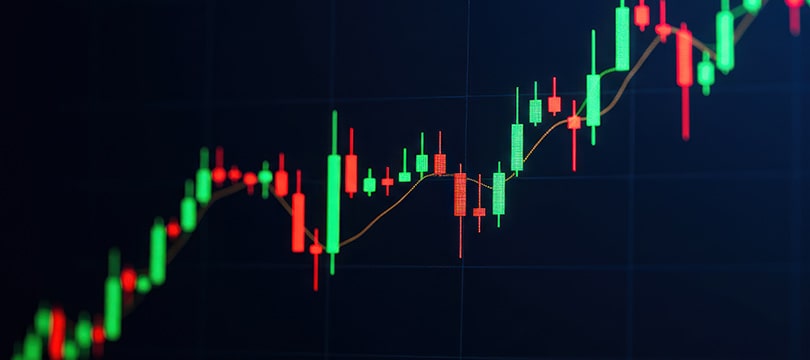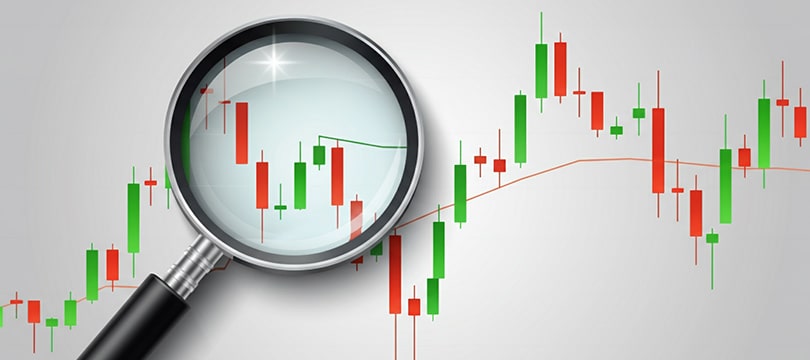Order flow is one of the most advanced techniques in Forex market trading. It allows you to observe
not only what happens in prices, but also how and why certain movements occur by analyzing the actual flows of orders that pass through the book.
It's no surprise that increasingly effective variants have emerged in recent decades. One of these involves the footprint chart. We'll discuss it here.
What is Order Flow
Before talking about footprint or advanced tools, it's essential to understand
what order flow is in itself.
Order flow is the study of orders entering the market: buys and sells, both limit and market, and especially their interaction in real-time.
The goal is to identify
who is controlling the market at a given moment: buyers or sellers?
This information is not visible in a traditional candlestick chart, which only shows the final results of the interaction between supply and demand. Order flow, on the other hand, reveals
how those prices were formed: how much pressure there was, how many aggressions, how much passivity.
The
footprint chart, on the other hand, is a type of chart that organizes order flow information in a visual form. Like the most classic of charts, the footprint is also composed of candles. They express:
- The volumes traded at each price level;
- The distinction between aggressive buying volumes (market buy) and selling volumes (market sell);
- The delta between buys and sells;
- Any imbalances between the two sides of the book.
There are different types of footprints (bid/ask, delta, volume, etc.), but they all offer a
granular reading of real flows, far beyond the simple OHLC chart. It becomes possible to intercept zones of institutional interest,
hidden accumulations, trend exhaustions, and many other dynamics useful for trading.
Tools for Order Flow with Footprint
Analysis using footprint is not improvised: it requires specific tools and
the habit of interpreting complex data. Here are the main ones.
Delta: Understanding Movement Strength
Delta measures the
difference between aggressive buying and selling volumes. In practice...
Delta = Market Buy Volume - Market Sell Volume
A positive delta indicates that buyers were more aggressive, a negative delta signals a predominance of sellers.
Let's take a practical example. EUR/USD chart, candle with bullish body but negative delta. Such a setup indicates that
the price rose only due to a lack of supply, not because there was real buying pressure. This is a first warning sign for a possible
false breakout.
Delta can be analyzed:
- At the level of a single candle;
- Cumulatively over an area;
- Compared to the historical average.
Imbalance: Imbalances Between Bid and Ask
An
imbalance is a situation where, at a given price level, the quantity of aggressive buy or sell orders
far exceeds the opposite one, usually with a minimum ratio of 3:1 or 4:1.
In the footprint chart, the imbalance is graphically highlighted (e.g., with different colors), and represents an
attempt to control the market by one of the two factions.
On USD/JPY, a 4:1 sell imbalance is observed in the 147.820–147.840 cluster. This signals a
strong intervention by sellers. If the price reacts by maintaining the area as resistance, we could have a short setup with a stop just above.
Imbalances are useful for:
- Identifying zones of institutional entry;
- Assessing the sustainability of a movement;
- Finding key zones of breakout or reversal.
Cluster: Reading "Hidden" Volumes
A
cluster is a price area where a high volume of trades is concentrated. But it's not just a matter of quantity:
it also matters how these volumes are distributed between bid and ask.
In the footprint, clusters can reveal:
- Zones of absorption (stable prices but high volumes);
- Zones of exhaustion (high volume but unable to push the price);
- Zones of accumulation (flat with increasing volumes).
Here's an example. On GBP/USD, a prolonged cluster between 1.2670 and 1.2675 with neutral delta could indicate that
both parties are opening positions, waiting for news flow. The subsequent breakout will be much more significant if supported by new imbalances.
Reading clusters is particularly useful for:
- Anticipating range breakouts;
- Distinguishing between structural movements and manipulations;
- Validating entries at already known levels (supply/demand, technical levels).
How to Defend Against False Signals
The
biggest threat for those using order flow is misinterpretation. It generates a large amount of available data, which can deceive even experienced traders, especially in volatile or low-liquidity markets. Here are some useful tips.
Don't Use Order Flow Alone
The most common mistake is
considering order flow as the only decision-making indicator. In reality, it is a tool that works
best when combined with a pre-existing structure: technical levels, macro junctions, strategic times (London open, New York, fixing).
Using order flow without context is equivalent to looking at
a section of the market, but not the complete picture.
Beware of Micro-Imbalances
Not all imbalances are significant. A small imbalance in a marginal price band, at an illiquid time, or on a secondary level
can generate misleading signals.
To defend against this, it would be good to...
- Filter by absolute minimum volume;
- Analyze the duration of the signal;
- Check the immediate price reaction afterwards (e.g., absorption or continuation).
Multi-Candle Validation
Many false signals are unmasked
by comparing multiple consecutive footprints. For example:
- If in three consecutive candles there is increasing delta but flat price, a bullish trap could occur.
- If strong imbalances alternate without direction, a loss of market control could occur.
In these cases, it's better to wait for
structural confirmations, rather than anticipating entry.




